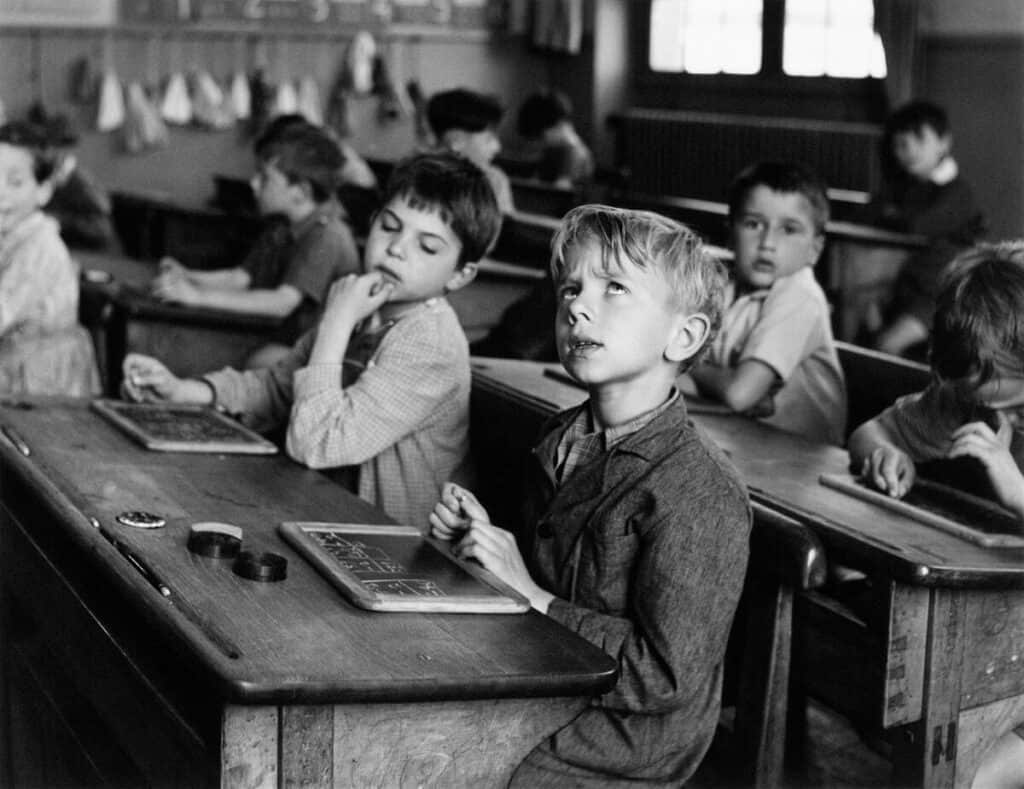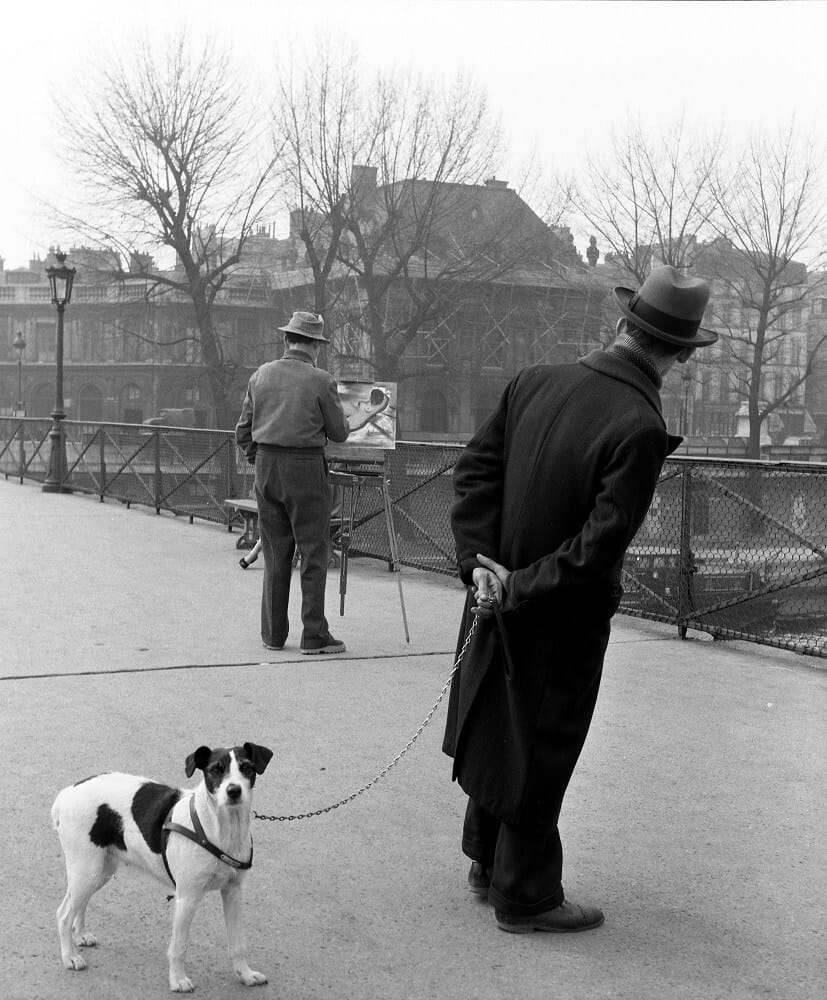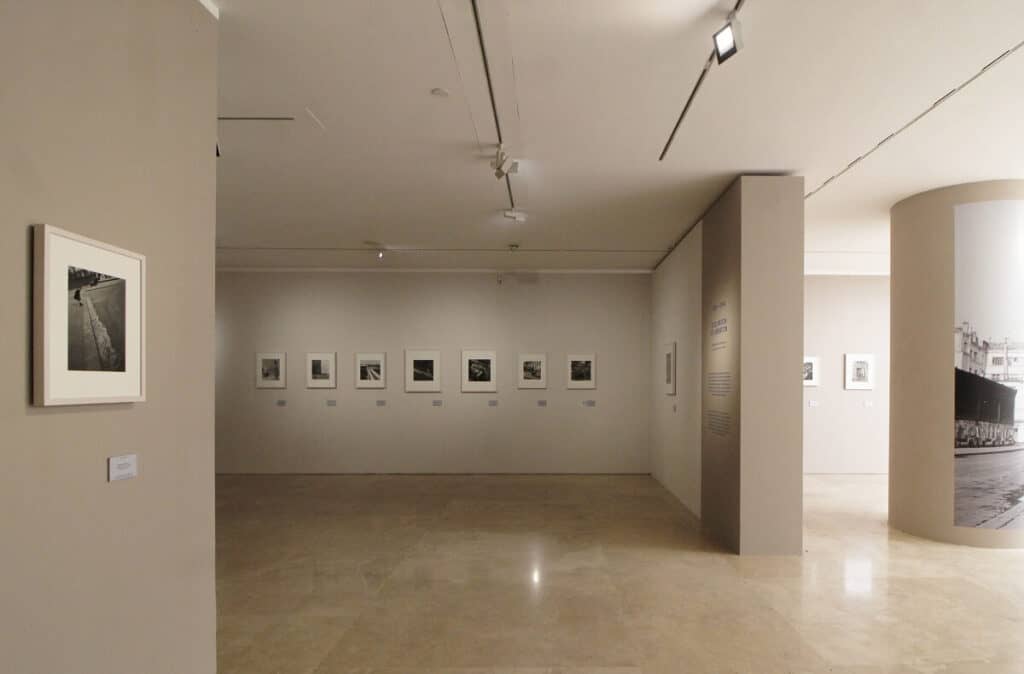Prints from the Atelier Robert Doisneau in Montrouge adorn the walls of Rome’s Ara Pacis Museum through September 4th
The work of Robert Doisneau will again captivate viewers as 130 of his images are featured in Rome’s Ara Pacis Museum. Curated by Gabriel Bauret, the featured images capture the intimacies of Paris, and largely from the 1930s through the 1960s; the exhibit documents the subcultures and concepts which ultimately construct the Paris revealed through Doisneu’s lens.
The exhibition is produced by Roma Culture, Cassa di Risparmio di Padova and Rovigo Foundation, and the Silvana Editoriale Project, and is divided into 11 sections, beginning with a chronological telling of Doisneu’s life. From his life as a small boy in a suburb of Paris, viewers can see through photos, his evolution into an emblem of humanist photography and a founder of contemporary photojournalism.
The center of the exhibition focuses largely on Doisneau’s iconic street photography which captures Paris and its suburbs in both its pre-war and post-war eras. The section “Le Théâtre de la rue” is central to the exhibit, demonstrating how the photographer found not only his subjects on those streets, but also his artistic voice. Iconic photos like his famous “Le Baiser de l’Hôtel de Ville” recall Doisneau’s artistic origins and encapsulate the harmonious truths and disordered charm found in everyday life.

Although “Le Monde du travail” (1935-1950), “Scènes d’intérieur” (1943-1970), “Concierges” (1945-1953). and “Bistrots “(1948-1957) are sections that do not feature the realities of life on the street, they do express the reality of life for much of the working class. Through photos like “Madame Augustin,” and the hardened faces and working bodies of subjects alike, the photos tell the stories of soldiers, coal miners, attendants, and waiters–provoking feelings of comfort, intimacy, and relatability. Doisneau’s camera acts as a mirror, reflecting not their tiredness or sadness, but instead reflecting their society and their humanity in its purest form.
The Second World War created a schism in time, for both Doisneau and the entire world. The sections “Occupation et Libération” (1940-1944) “L’Après-Guerre” (1945-1953), and “Mode et Mondanités” (1950-1952), mimic the dizzying effects of life in a Paris when its once shining lights were dimmed, without neglecting the resilience of the French people under siege. Doisneau is not merely a spectator, but a part of the fabric of the Parisian experience. War proved daily life to be difficult, yet Doisneau encapsulates the rebirth and rekindling of Paris with the same vigor he experienced its suppression; as seen in” Dimanche matin” or “Les Habitants de la Rue du Transvaal” which are on display.
Also post-war, the collection “Une certainine idée du bonheur” (1945-1961), Doisneau explores “a world where I would feel good, where people would be kind, where I would find the tenderness I hoped to receive.” These photos allow the viewer to take part in the joyousness of the subjects. Spectators dance alongside “La Dernière Valse du 14 juilletor”, and return smiles to “Le Baiser de l’Hôtel de Ville.” These photos act as reminders that there is happiness to be found in this world, even if the world can be cruel, and even if you must seek to find it.

“Enfances” (1934-1956) and “Portraits” (1942-1961) present some of Doisneau’s most iconic photos, including iconic subjects like Picasso, Dubuffet, Alberto Giacometti, and Jean Cocteau. Doisneau encapsulates a sentiment of intimacy, of personality, of exclusivity with these shots. As if, had these photos not been taken, the moment may not have existed at all. His photos do not provoke a questioning of disorder, but rather an embracing of disorder, normalizing the intimacies of life and the confusion which accompanies it. The photos that interest Doisneau “are those that don’t come to a close. That don’t tell the whole story but instead remain open for other people to walk beside for a while, to continue as they wish: a steppingstone to a dream, in a sense.”
The exhibit is organized by Zétema Progetto Cultura and Silvana Editoirale, and particular attention for this exhibition was dedicated to accessibility : for people with visual disabilities , a dedicated itinerary was designed, in collaboration with the Omero State Tactile Museum , featuring relief drawings and related audio descriptions . In addition to these supports, a calendar of free tactile visits is available, guided by specialized operators. Free guided tours of the exhibition are also available for the deaf public : visitors are accompanied by interpreters of the Italian Sign Language – LIS, a service made available by the Department of Social Policies and Health – Human Services Department of Roma Capitale and created by the Cooperative Segni d’Integration – Lazio.
Whether it is pre-war or post-war, Doisneau’s photography has stood the test of time. The iconic French photographer’s work continues to seek truth, happiness, humanity, and humility. Through Doisneau, the spectator and the camera are one in the same– vulnerable to life in its unedited form. These 130 photos will transport you from the center of Rome, into a world of intimate reflection and beautiful disorder.

From 28 May to 4 September 2022
Ara Pacis Museum
Via di Ripetta, 180
Hours: Every day 9.30 – 19.30
Tickets (exhibition only): Full € 11, reduced € 9
Ara Pacis Museum ticket + exhibition for non-residents in Rome: Full € 17.00, reduced € 13.00
Ara Pacis Museum ticket + exhibition for Rome residents : Full € 16.00, reduced € 12.00


